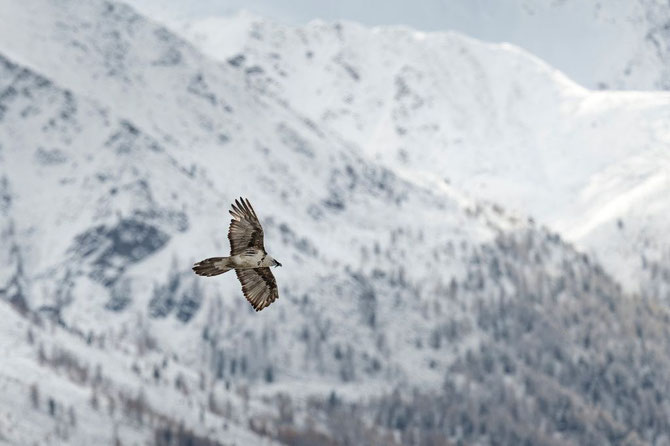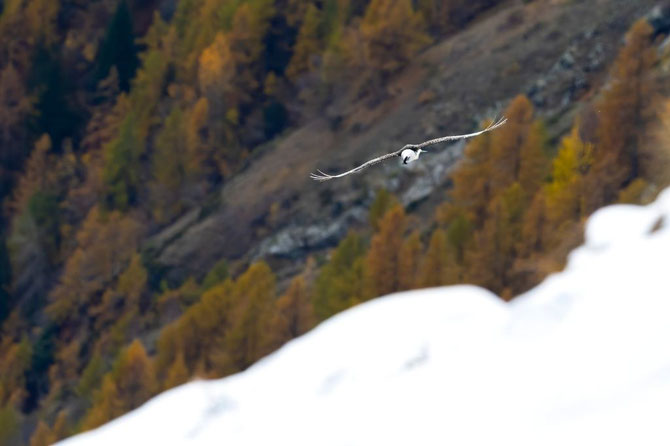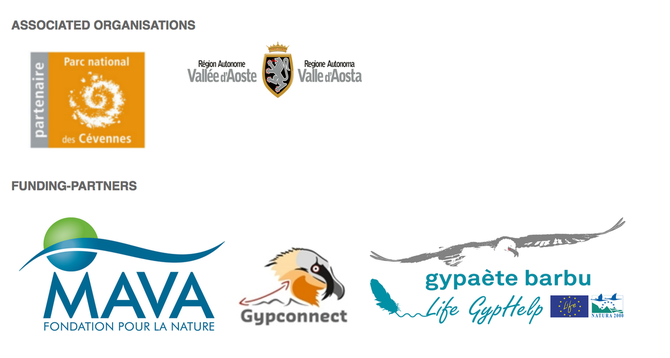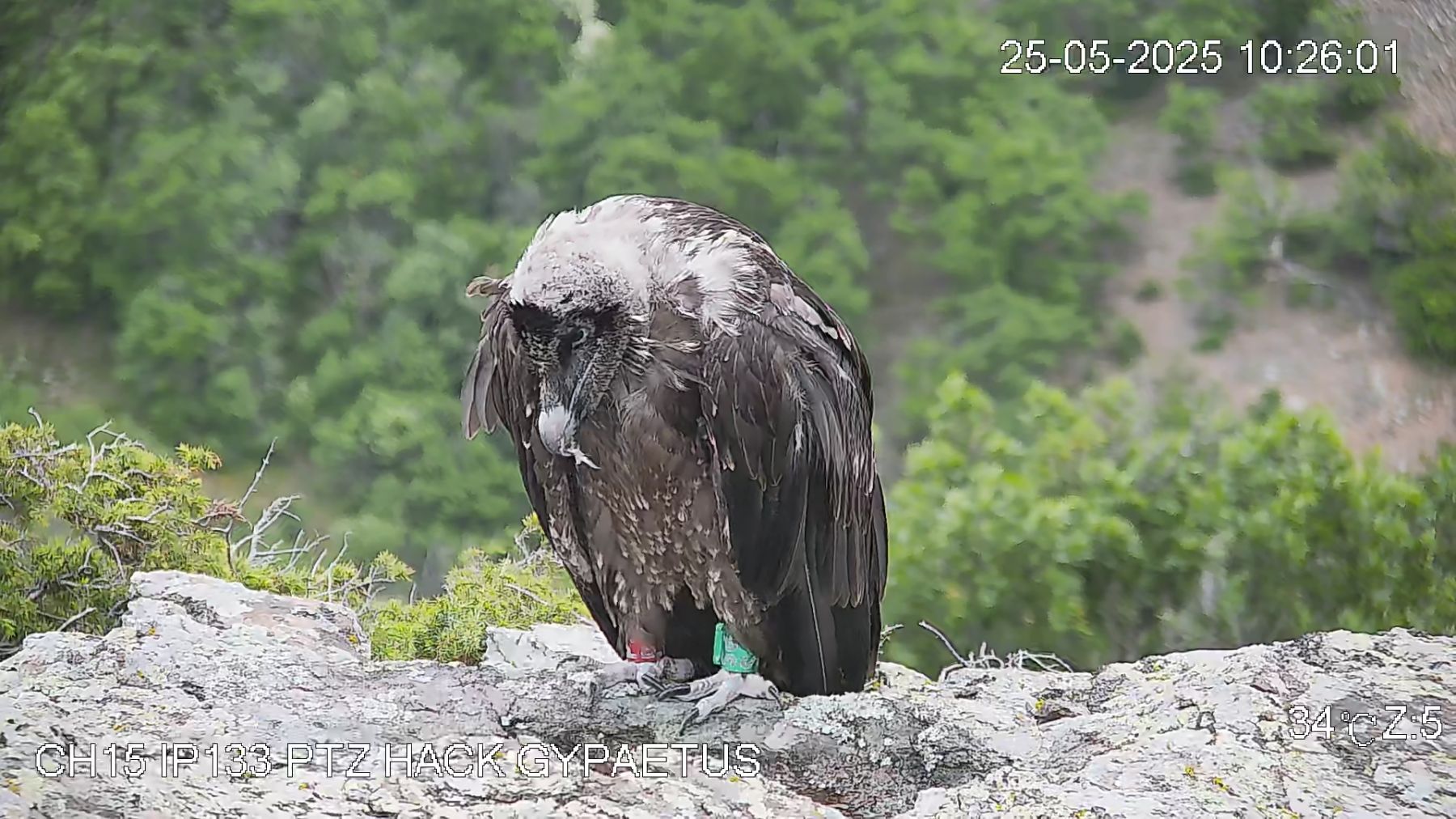
White Bearded Vultures seem to be relatively common in some mountain ranges such as the High Atlas in Morocco or the Himalayas but are a relatively unusual sight in the Alps.
Recently, the other known white Bearded Vulture in the Alps was Palanfré, who unfortunately died in spring 2018 at Novalesa due to a collision with a power line, but it seems another white Bearded Vulture recently resurfaced.
The white Bearded Vulture

André Roveyaz, a wildlife photographer, recently shared with us some wonderful photos of a white Bearded Vulture in the Alps and we got in touch with our International Bearded Vulture Monitoring Network (IBM) local partners to see if there is more to the story.

It turns out that this individual was first observed on 11 June in Valgrisenche and then again at the end of October in the territory of Brissogne, Les Laures Valley. And on 5 November, it was sighted and photographed by André Roveyaz in Val di Rhemes.
How do Bearded Vultures get their rusty colour?
The Bearded Vulture is an unmistakable bird, with strong features, among which is their rich rusty orange colour on their body. How do they get this colour? Bearded Vultures often visit springs and water sources containing iron oxides (ferruginous) and bathe in mud to add a reddish colour to their plumage. A relatively recent research study investigated why they do this and concluded that plumage colouring by Bearded Vultures is unlikely to have an antibacterial role but that the primary function is to signal territorial status and may also be involved in other processes such as pair formation and maintaining pair bonds, as suggested for Egyptian Vultures which also colour their plumage. You can learn more on this on this research review.
Bearded Vultures in the Alps

The species was driven to extinction in the Alps during the 20th Century, and to bring them back, the Foundation for the Conservation of Bearded Vultures (FCBV), now the Vulture Conservation Foundation, united a network of vulture experts to establish an international programme for breeding and reintroducing Bearded Vultures to the Alps. We released the first birds in 1986 at Hohe Tauern National Park (Austria), and in 1997 the first breeding pair successfully raised a chick in the wild in France.
Today, there are 250 Bearded Vultures, including 55+ breeding pairs, across the Alps. This reintroduction project has sparked the imagination and gathered the support of many stakeholders across the Alpine chain and is considered one of the best wildlife comeback stories of all times!
International Bearded Vulture Monitoring (IBM)

The International Bearded Vulture Monitoring Network (IBM) is a unique international collaboration led by the Vulture Conservation Foundation between national & natural parks and non-governmental organisations to coordinate the monitoring activities for European Bearded Vulture populations. Through this network, data about the Bearded Vulture in Europe is collected, shared and made available to everyone working for the conservation of the species. The IBM-network also uses this data and comes together to discuss conservation strategies and priorities for this species on an international level. There are currently 16 partners and two associated organisations part of the IBM-network.




